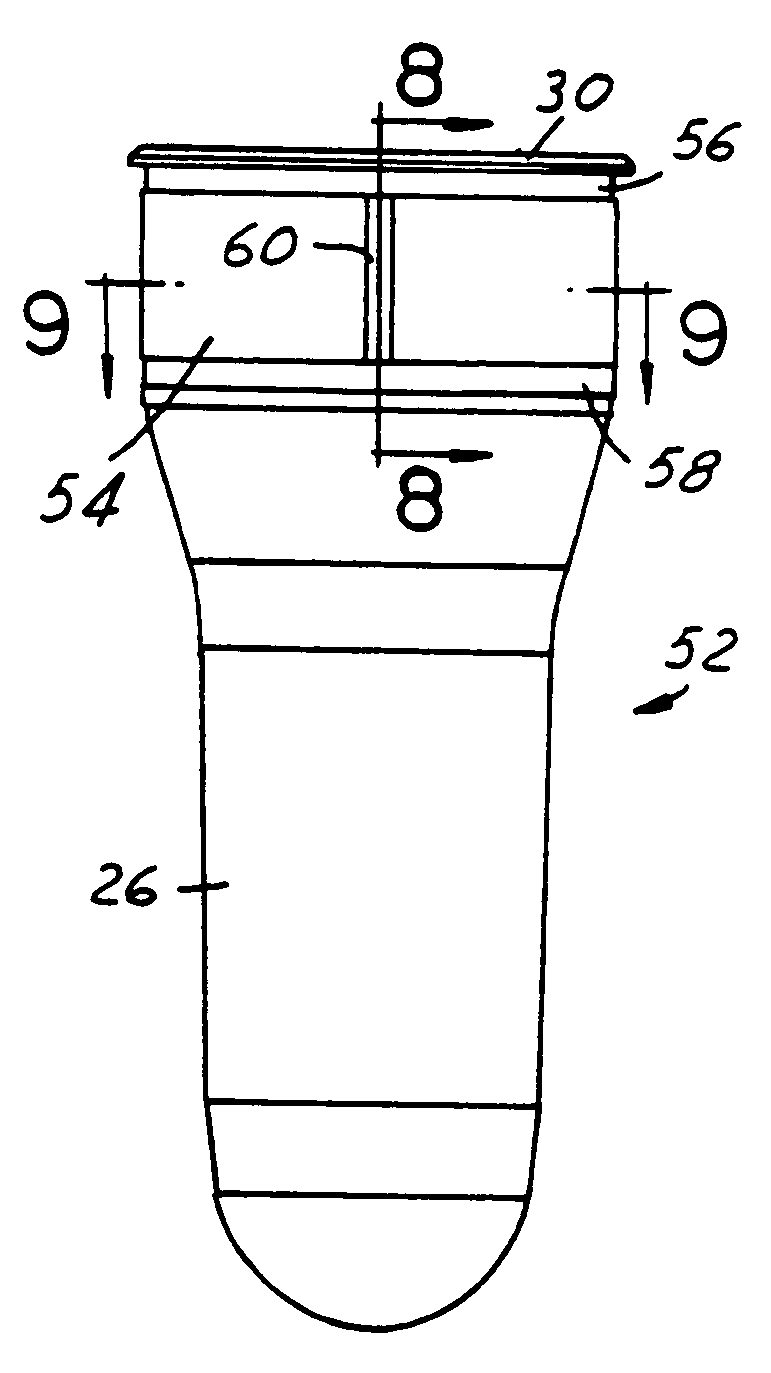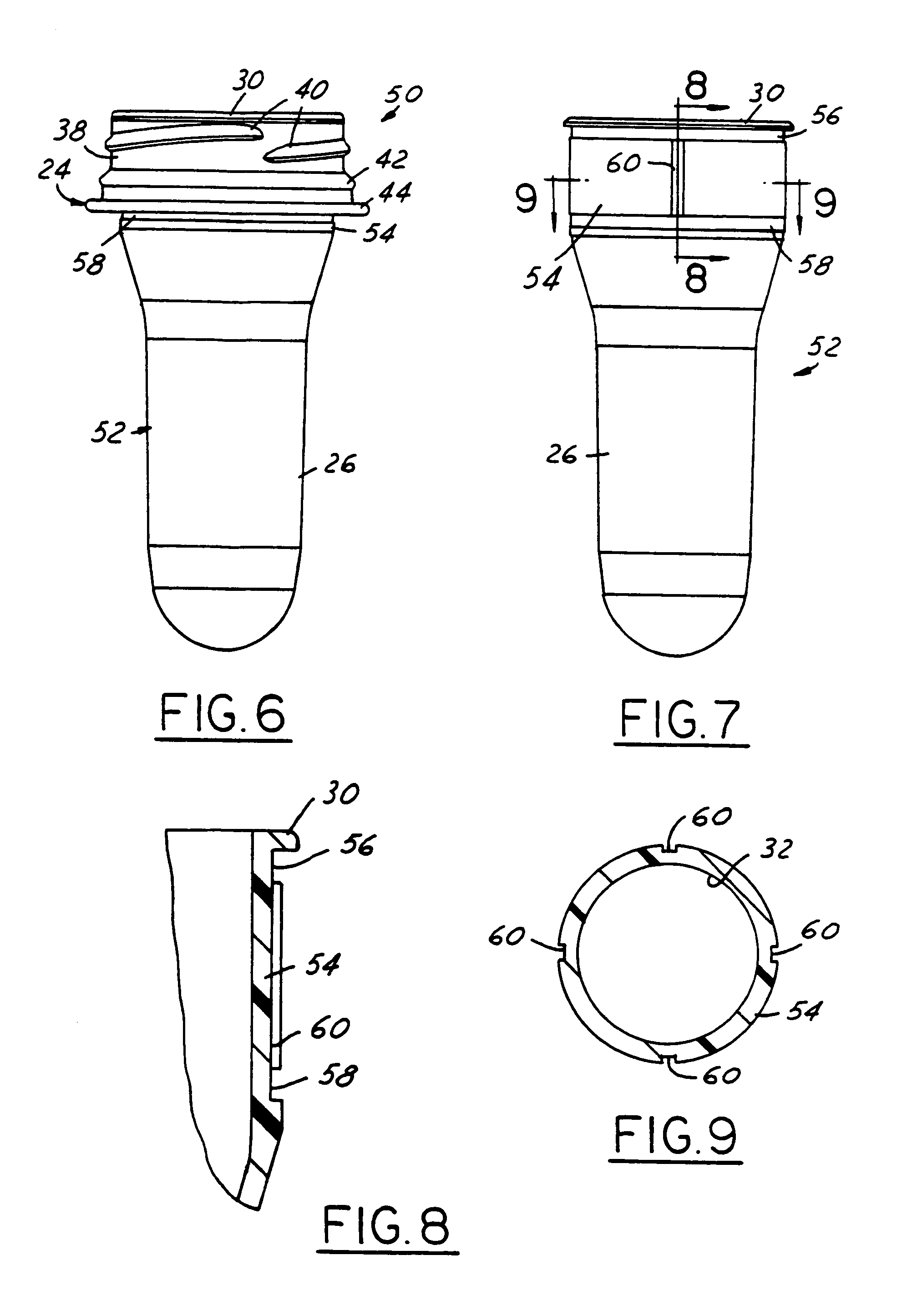Container preform assembly and method of manufacture
a technology of preform and container, which is applied in the direction of transportation and packaging, other domestic articles, synthetic resin layered products, etc., can solve the problems of limiting the cycle time of the molding process, limiting the ability to obtain the most desirable characteristics at the finish, and limiting the design capabilities of preform manufacture, so as to improve the operating characteristics of the finish area and improve the accuracy and stability of dimensioning
- Summary
- Abstract
- Description
- Claims
- Application Information
AI Technical Summary
Benefits of technology
Problems solved by technology
Method used
Image
Examples
Embodiment Construction
[0014]FIGS. 1–5 illustrate a preform assembly 20 in accordance with one presently preferred embodiment of the invention as comprising a preform 22 and a separate finish ring 24 secured over the neck of preform 22. Preform 22 includes a body 26 having a closed lower end, and a neck 28 integrally molded with body 26. (Directional words such as “upper” and “lower” are employed by way of description and not limitation with respect to the upright orientation of the preform assemblies and components illustrated in the drawings. Directional words such as “radial” and “circumferential” are employed by way of description and not limitation with respect to the axis of the preform neck or finish ring as appropriate.) Neck 28 typically is cylindrical. A flange 30 extends radially outward from the open end of neck 28 remote from body 26. Neck 28 and flange 30 surround the open mouth of preform 22. A pair of axially spaced circumferential channels 34, 36 extend around the outer surface of neck 28...
PUM
| Property | Measurement | Unit |
|---|---|---|
| area | aaaaa | aaaaa |
| plastic | aaaaa | aaaaa |
| mold temperature | aaaaa | aaaaa |
Abstract
Description
Claims
Application Information
 Login to View More
Login to View More - R&D
- Intellectual Property
- Life Sciences
- Materials
- Tech Scout
- Unparalleled Data Quality
- Higher Quality Content
- 60% Fewer Hallucinations
Browse by: Latest US Patents, China's latest patents, Technical Efficacy Thesaurus, Application Domain, Technology Topic, Popular Technical Reports.
© 2025 PatSnap. All rights reserved.Legal|Privacy policy|Modern Slavery Act Transparency Statement|Sitemap|About US| Contact US: help@patsnap.com



